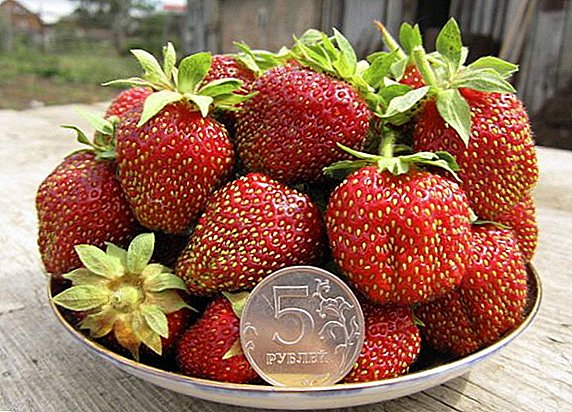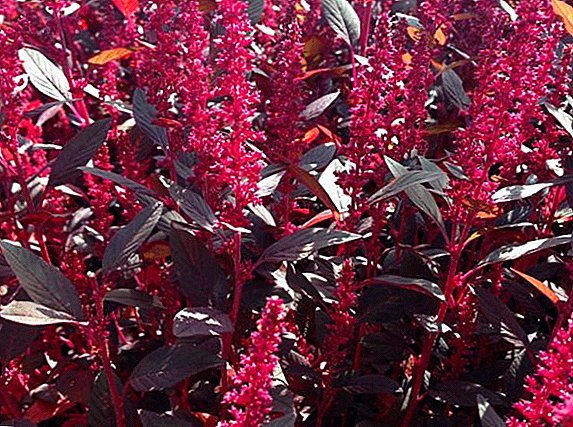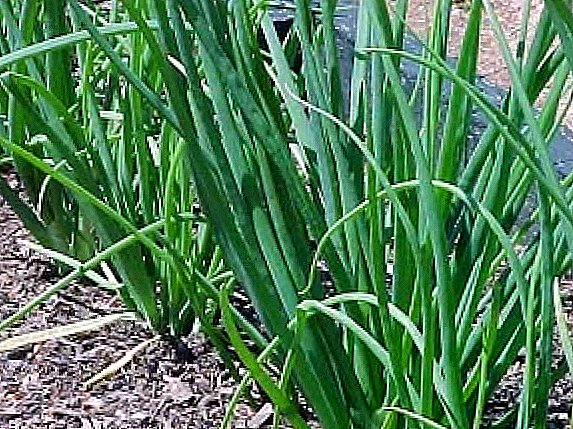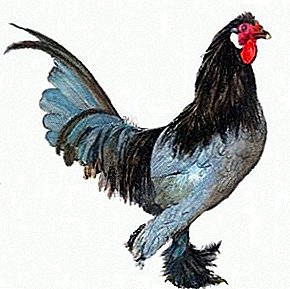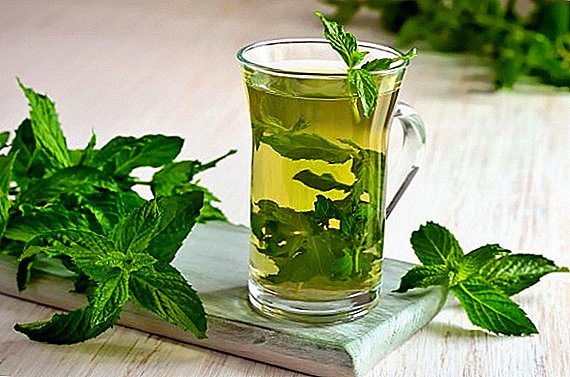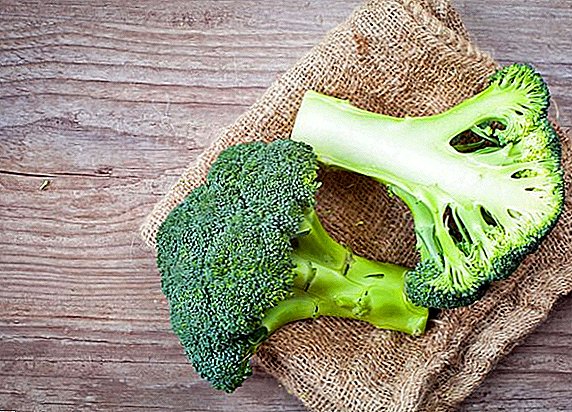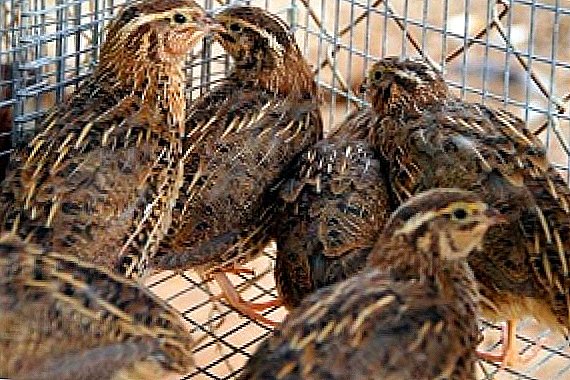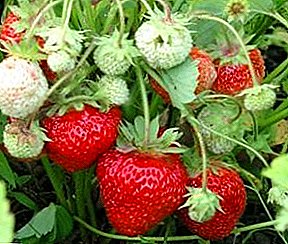 On the shelves of stores strawberries can be found all year round. This berry is grown in European countries on the so-called Dutch technology. Its essence lies in the constant planting of new seedlings of plants, the special location of the bushes, the specific conditions of humidity and temperature.
On the shelves of stores strawberries can be found all year round. This berry is grown in European countries on the so-called Dutch technology. Its essence lies in the constant planting of new seedlings of plants, the special location of the bushes, the specific conditions of humidity and temperature.
Most often, this method is used to organize a business selling berries. But it is possible to use this system for home use.
Growing strawberries in Dutch greenhouse technology
Greenhouse conditions
 Constant temperature at the level of 18-25 degrees (before the flowering period - no more than 21 degrees, in the future - no more than 28 degrees). If there are no special installations that regulate this indicator, then the greenhouse premises should be aired periodically.
Constant temperature at the level of 18-25 degrees (before the flowering period - no more than 21 degrees, in the future - no more than 28 degrees). If there are no special installations that regulate this indicator, then the greenhouse premises should be aired periodically.- Humidity about 70-80%. To maintain the need to periodically spray the air. Moreover, with artificial heating it should be done much more often. For the entire period of flowering, these procedures are stopped, since the ingress of moisture on the flowers adversely affects the yield, and also increases the risk of strawberry diseases.
- The carbon dioxide content is 0.1%. The level is controlled by sensors, if necessary, conduct airing.
- Sufficient lighting, similar to the 15-hour daylight. Under such conditions, the crop will ripen in 35 days. If you reduce the lighting time to 8 hours, then you can wait for the berries no sooner than after 48 days. For additional highlighting area in 3-6 square. m need a discharge lamp for 40-60 watts.
Find out the most common diseases of red currant.
Read about the pests and diseases of black currant here.
Features of different varieties of black currant //rusfermer.net/sad/yagodnyj-sad/posadka-yagod/luchshie-sorta-chyornoj-smorodiny.html.
Bushes location
Plants are not planted in open ground, as the Dutch system provides for year-round continuous fruiting. For planting, you can use large pots (no more than 70 cm in height), drawers or plastic bags. The latter method is most popular for reasons of space.
greenhouse with transparent walls and roof - vertical placement,
garage, house room, etc. - horizontal placement.
The fact is that if you place the plants vertically, it will be extremely difficult to provide them with proper accommodation in a closed garage.
Seedling
 When all the conditions for the placement of future strawberries are thought out, it's time to think about where to get the seedlings and what it should be. Seedlings are planted every 1-2 months. You can buy it in specialized stores throughout the year. But financial costs in this case will be quite high.
When all the conditions for the placement of future strawberries are thought out, it's time to think about where to get the seedlings and what it should be. Seedlings are planted every 1-2 months. You can buy it in specialized stores throughout the year. But financial costs in this case will be quite high.
Seedlings of strawberry "frigo" (that is, chilled bushes) can be prepared and themselves. After all, what agrofirms offer is nothing but well-developed bushes, which were dug up in the fall and kept in a cool basement, a refrigerator or a special freezer installation.
And there is nothing supernatural about it. After all, nature is almost the same. Strawberry bushes are "preserved" in the winter under a layer of snow. That's the whole essence of the Dutch technology of growing these berries. You just need to create the conditions to activate flowering and ripening berries.
Note gardener - basil growing from seed.
Features of growing broccoli //rusfermer.net/ogorod/listovye-ovoshhi/vyrashhivanie-i-uhod/klyuchevye-osobennosti-vyrashhivaniya-kapusty-brokkoli.html.
Description of strawberry varieties
The most high-yielding Dutch strawberry varieties are Darselek, Gloom, Marmolada, Polka, Sonata, Tribute, Elstanta, Maria, Tristar, Selva. They are fully suitable for this method of cultivation.
Strawberry technology
So, here is a sequence of actions that implies independent growing of seedlings. In the case of a purchase, some items can simply be omitted.
- In the fall, prepare a soil for planting seedlings: for each weave of land, add 5 kg of superphosphate, 3 kg of potassium chloride, 20 kg of lime, 5-6 buckets of manure.
- In the spring, plant the plants at intervals of 30-50 cm.
- In the first year, cut off all mustache from the uterine bush.
- In the second year, each bush will grow from 20-30 whiskers, which must be rooted to form strong seedlings.
- Young seedlings dig up in mid-October at a temperature of minus 2 degrees.
- Over the next day in the mode of 10-12 degrees to clear from all large leaves, soil, vegetative shoots.
- In no case can the roots be washed and cut!
- Seedlings collected in bundles, put in plastic bags (their thickness is about 0.02-0.05 mm, with a thicker film, all plants will die) in a refrigerator at a temperature of from 0 to minus 2 degrees. At a lower mode, the strawberry will die, and the higher one will start growing.
- 1 day before the intended planting of seedlings need to get and thaw plants at 10-12 degrees of heat.
- Fill containers in the greenhouse with sterile soil: sandy soil (or mineral wool, coconut fiber), rotted manure and sand. The ratio of 3: 1: 1, respectively. You can also take peat and perlite.
- To plant the seedlings on the prepared places.
- Organize the correct watering (drip better) and other measures for the care of plants.
- After harvesting, the bush is removed, it can be simply thrown out or, for example, used as a mother plant.
It is worth considering that the so-called "queen cells" need to be changed every 2 years, and not 4, like in ordinary garden strawberries. This is done in order to avoid the inevitable degeneration of the bush.
Growing strawberries at home
 Using Dutch technology for growing strawberries at home is not much different from the greenhouse method. Only here should be placed bushes in a horizontal plane to organize the right lighting. And also have to work hard to create optimal indicators of temperature and humidity.
Using Dutch technology for growing strawberries at home is not much different from the greenhouse method. Only here should be placed bushes in a horizontal plane to organize the right lighting. And also have to work hard to create optimal indicators of temperature and humidity.
This method of growing strawberries with the right organization gives a staggering harvest. But note that such strawberries will never get the taste and aroma that berries from open ground have.
Note gardener - the cultivation of Chinese cabbage.
How to grow cabbage seedlings in our article here //rusfermer.net/ogorod/listovye-ovoshhi/vyrashhivanie-i-uhod/vyrashhivanie-rassady_kapusti_v_domashnih_usloviyah.html.


 Constant temperature at the level of 18-25 degrees (before the flowering period - no more than 21 degrees, in the future - no more than 28 degrees). If there are no special installations that regulate this indicator, then the greenhouse premises should be aired periodically.
Constant temperature at the level of 18-25 degrees (before the flowering period - no more than 21 degrees, in the future - no more than 28 degrees). If there are no special installations that regulate this indicator, then the greenhouse premises should be aired periodically. Find out the most common diseases of red currant.
Find out the most common diseases of red currant. Note gardener - basil growing from seed.
Note gardener - basil growing from seed. Note gardener - the cultivation of Chinese cabbage.
Note gardener - the cultivation of Chinese cabbage.
